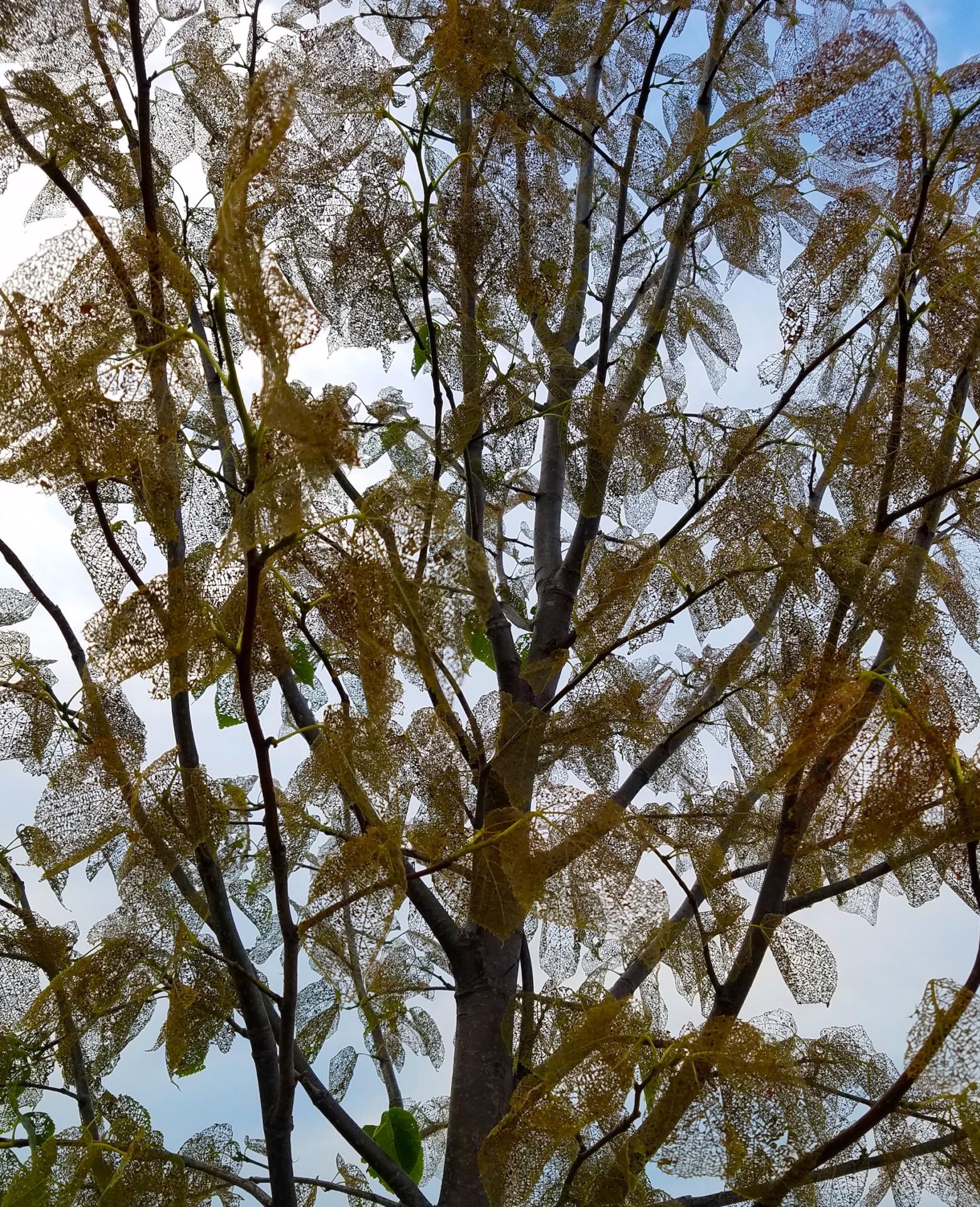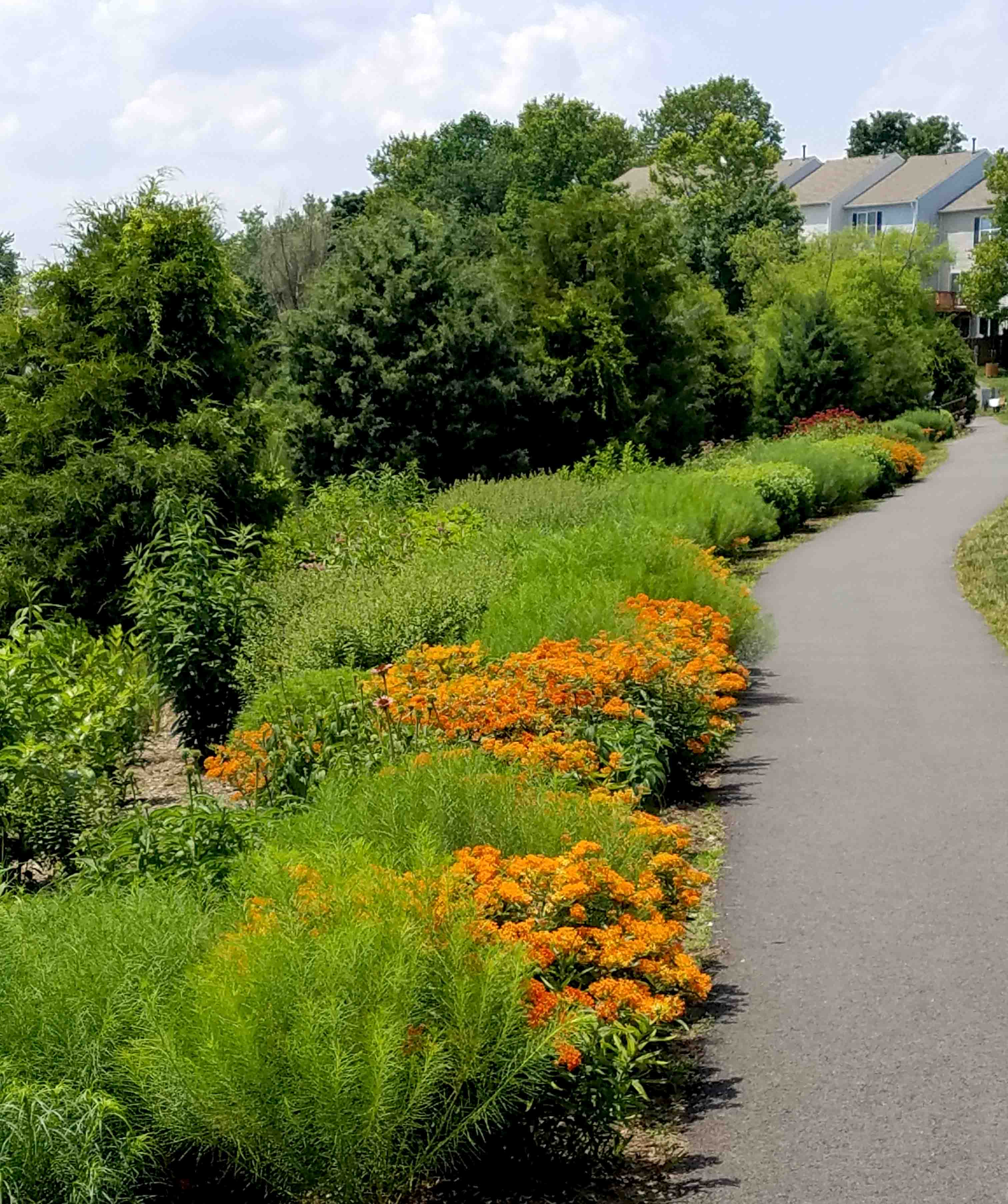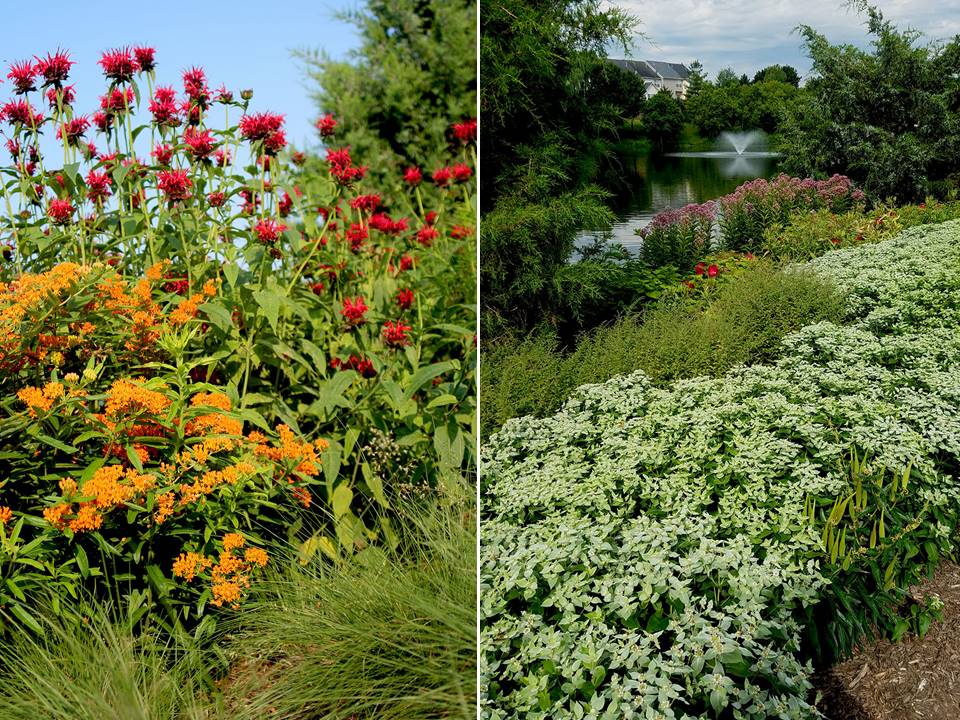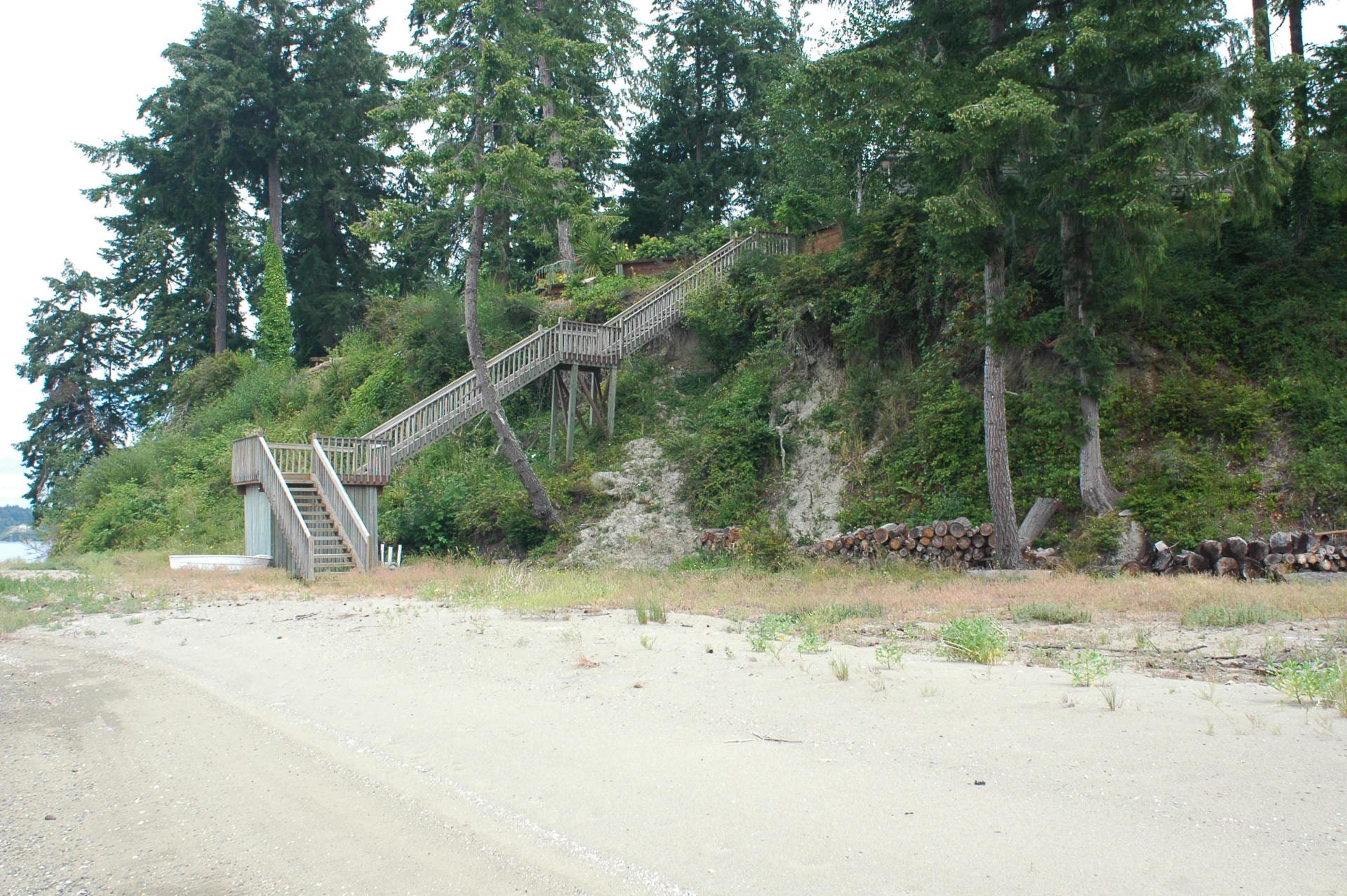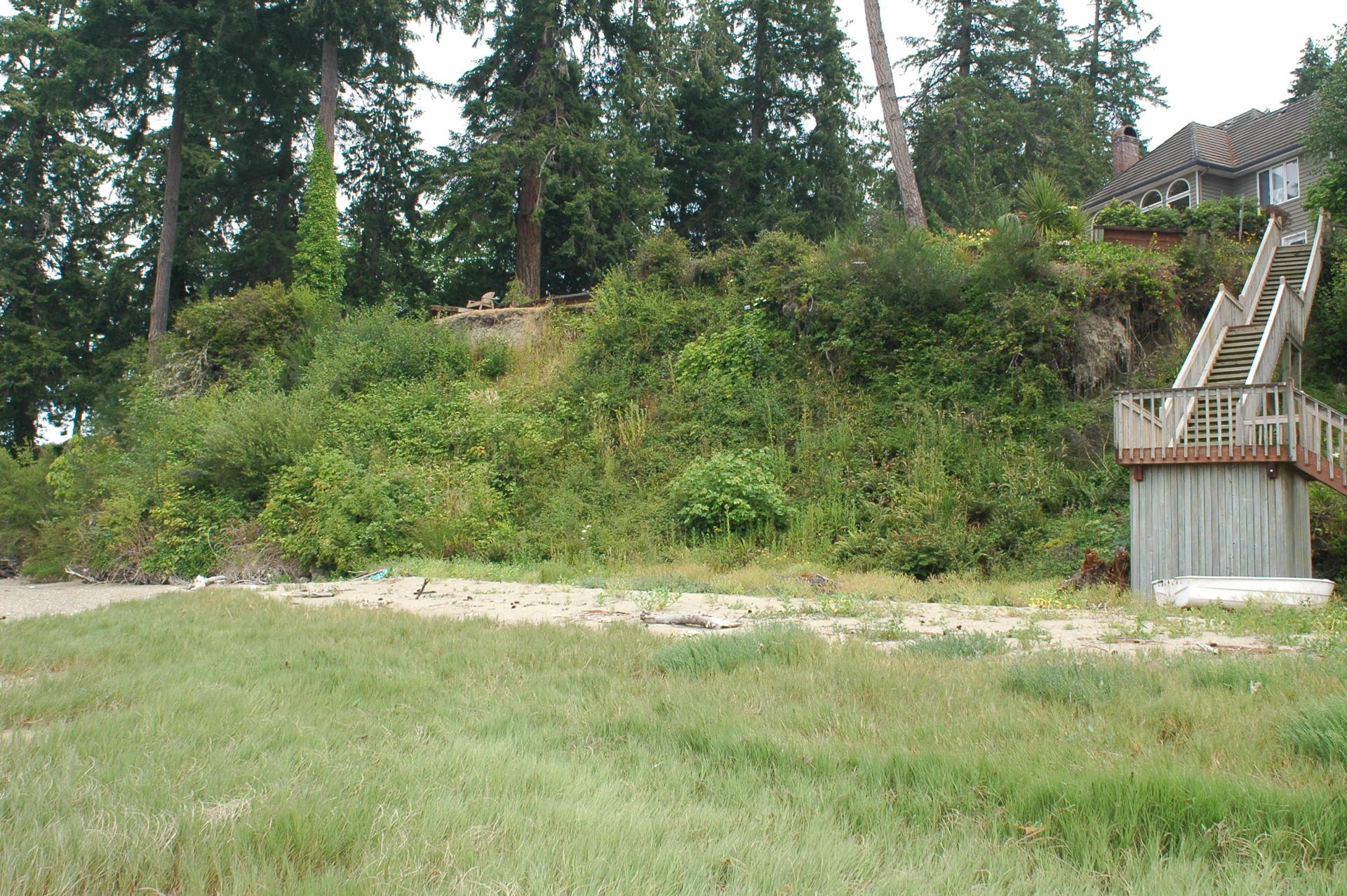Contributors: John Magee, Daniel Peterson, and Bill Peregrine
With the end of the 2017 season approaching, ELA asked members from across the country to recount the highlights of their season in the landscape from a maintenance perspective. Here are their responses.
John Magee is President of Magee Design in Middleburg, VA – one of the Washington DC metro areas most experienced design firms in the use of native plants in the landscape. John is also the creator and co-host of the Native Plant Podcast, a podcast created to help educate the public about the benefits of working with our beautiful native plants.
Daniel Peterson started HabAdapt Landscape Design in 2005 incorporating ecologically sound permaculture design principles into all of his designs. HabAdapt focuses on developing landscapes and designs aimed at long-term sustainability and functionality with projects ranging from small court-yard design to larger farm land planning. Daniel recently became a certified advanced dry stone wall craftsman through the DSWA (Dry Stone Walling Association of Great Britain).
Bill Peregrine, EPC is a designer, builder and care professional of organic and sustainable landscapes in the Pacific Northwest. He has a passion for understanding Nature’s natural systems and replicating those systems in the built landscape. With more than 30 years of horticultural experience, Bill has learned to look beyond “conventional” practices and listen to what Nature needs to strike a balance between the needs of Nature and the needs of people. Today, Bill is President of Earthdance Organics LLC, an organic and sustainable landscape service business.
What was the greatest maintenance problem you encountered this year?
JM: Far and away the most problems we have from a maintenance concern is keeping out non-native invasive species (nnis). Northern Virginia is a mess of mixed ‘bad actors’ that are very difficult to control or eradicate and it seems like every year there’s something new to look out for. We try and stay away from chemically treating things, but sometimes it’s the only thing we can do to stay on top of the problem. Most of our weeding is done by hand, but we do dip into the ‘toolbox’ from time to time to handle tougher problems. One thing to keep in mind, herbicides can help be a tool to keep a maintenance budget more affordable to the owner of the gardens, just make sure you’re using them wisely and as a last resort. FOLLOW THE LABELS!!!
DP: The greatest maintenance issue we encountered this season was the perennial cool season weeds. The high levels of precipitation over the past year with a relatively mild winter seemed to influence cool season weeds such as Phalaris arundinacea (reed canary grass), Glechoma hederacea (creeping Charlie) and Campanula rapunculoides (creeping bellflower). The other surprise this season was the cyclic high level of Popillia japonica (Japanese beetle), which completely defoliated numerous new tree plantings, especially Betula sp. and Tilia sp.
BP: In the PNW we experienced a record setting rainfall between November and March. This did a number of things but primarily the heavy, consistent rains washed nutrients out of the soils. For customers that had been on our organic program for 2+ years, we seemed to recover quickly as their nutrient reserves and biological life were already established. But for newer customers, we needed to use bridge products to force faster lawn growth than would normally be needed. (A bridge product is an organic fertilizer with a bump of Urea Nitrogen).
Also, because of the rains, the moss issue hit early and hard. We have naturally acidic soils in the PNW so the leaching of minerals and wet conditions were perfect for moss growth. Some customers (including my lawn which is Fleur de Lawn) got moss along the edges particularly in the shade, which I hadn’t seen in a number of years.
We brew FertileTea (our derivative of a brewed compost tea) so, for the first time in our history, we added ½ of the lowest recommended application of liquid iron with the tea in our spray equipment so we could bump chlorophyll production to quickly waken up the grass. In addition, while it didn’t outright kill the moss, it did brown it slightly. We achieved our goal of hastening grass growth and slowing moss growth. The combo worked and the grass jumped into the lead.
Also leaf diseases hit early. Dormant oil sprays applied over the winter didn’t seem to be all that effective. We resorted to adding Actinovate to our FertileTea (our derivative of a brewed compost tea) early for many trees, particularly those in the Prunus family (i.e. Cherries, Plums). Leaf diseases persisted well into the early summer.
Did you make a maintenance discovery this season – find a time-saving tip or develop a new approach that saved time or money?
JM: In the planting phase, we’ve taken more of a ‘no-till farming’ approach to help minimize soil disturbance which can bring weed seeds to the surface and enable them to germinate. This practice has helped immensely in keeping out the bad guys and speeds up our ability to plant.
BP: We consistently push our maintenance partners to mulch mow their customers’ lawns. For whatever reason, this message seemed to get a better foothold this year than in years past. Yes, they need to convert their mowers with mulching kits, but what a great time savings for them and huge benefit to us when they leave the grass clippings to help fertilize the lawn. One of our basic principles is that a plant’s best food is its own foliage. Everything the plant needs it produces. So, leaving the clippings really helps in our conversion of properties from years of synthetic fertilizers to our organic system.
And, as an added bonus, we started charging more when customers pick up their grass clippings after we realized we had to apply more fertilizer to compensate for the removal of lawn clippings. The research I have been able to find is that you can reduce the amount of applied nitrogen by 25% if you leave the grass clippings. In my unscientific observations, I would agree with this.
When a project does not include a maintenance budget, how do you adapt your design or practice?
JM: I don’t. We tell the client very truthfully that they’d better develop a budget for maintenance and expect to have to maintain their landscaping. A project not maintained is usually a project lost. One of the biggest misconceptions we fight is that native plantings are low maintenance. If that were true, we’d have no problem with non-native invasive species. Unfortunately, our natives can’t always compete with them, so we need to stay involved and keep out the invasives that threaten the landscaping we’ve just installed.
DP: Typically, I always stress the importance of planning for periodic visits during the first two seasons after a project has been installed, more to familiarize the clients with what to expect for maintenance. When we are not going to be maintaining a landscape, or there is no interest from the client, we will take a more aggressive approach to soil preparations and planting preparations. Often, we will remove non-desired species, and rely heavily on sheet mulching and compost to reduce emergence of problem species.
BP: I haven’t thought about this as every one of our customers automatically signs up for a minimum of one year of ongoing organic service. Their incentive is that we warranty our plants for 90 days unless the customer signs up for ongoing organic services in which case we increase the warranty to one year. It makes sense to me to extend the warranty because my technicians are then on the property regularly and can catch issues before they become a problem (i.e. under/over watering, leaf diseases, a plant that needs a bump of nutrition).
Have you used cover crops – annuals planted between and around plantings – in lieu of mulch? Which plants did you use? Was the approach successful?
JM: We had a stream bank restoration we did in the spring and though we used live plants, live stakes, wattles and fascines, we also over-seeded with a (native) wild flower mix. Unfortunately, the company maintaining it (not us) killed all those germinating seeds. By that time, it was too late in the season to germinate another bunch of native wildflower seed (most of which germinate in the summer months), so we used annual rye to get a quick ground cover down and hold the bank while the other plants get established. It seems to be holding, but next spring we’ll put down another batch of native wildflower seed and hopefully the annual rye will fade away.
DP: We always use cover crops for larger plantings along with biodegradable erosion blankets. We often use Avena sativa (oats) for rapid germination. I have also found oats to be a great herbivory supplement for deer, since they tend to eat the oats rather than go after the perennial plugs and germinating grasses. We have used Fagopyrum esculentum (buckwheat) in limited areas, but only if the clients are planning on using the buckwheat for food, pollinator attraction, green manure, etc. The problem we have found with using buckwheat is that it often suppresses desired seedling emergence, unless it is cut back before flowering and seed release.
BP: We do not use annual crops but are adamant that we cover the ground plane with plants. So, we use a lot of groundcovers. Rubus calycinoides, Ceanothus gloriosus ‘Point Reyes’, and Arctostaphylos uva-ursi ‘Massachusetts’ are some of my favorites. We also use spreading shrubs to help cover the ground. Our mulch of choice, though one that our customers have to get adjusted to, is arborist’s chips.
We just tore out a parkway lawn area and replaced it with Liriope spicata. We are excited to see it fill in this coming spring!
Which of your projects presented the greatest challenges this season? Did specialty gardens present unique challenges?
JM: We have some large pollinator gardens we’ve been creating for a local HOA and though they’ve been embraced by most of the community, there are still a few naysayers who look out their windows and see “weeds.” Lucky for us, they’re pretty awesome looking and beneficial “weeds.” Most people are coming around – especially once they see all the butterflies and birds brought in by our gardens.
DP: We always deal with water on all of our projects, and try to find ways to keep it on the landscape for use. We had one project this summer where another contractor had improperly installed a permeable surface on a slope, resulting in the residential basement flooding during every rain event. I worked with the homeowner and developed a landscape plan to account for the rainfall and surface water movement. We rebuilt the failing hardscape features as well as installed water diversion swales in all the garden spaces prior to planting. The permeable sidewalk was rebuilt with underground infiltration tanks to allow more water catchment and infiltration on the slope before the water could reach the basement entry. The infiltration tanks are installed with overflow points directing the water into a series of raingardens. The infiltration tanks, contour swales and raingardens are designed to reduce the landscaped area outflow of 2,260 gallons to less than 900 gallons during a 1.5 inch per hour rain event. The new rain infiltration basins prevented the basement from flooding during a 5-inch rain event this past September. All of the new stone surfaces are installed on a permeable stone base.
BP: We have so many projects that are challenging because they are not your common installations. Rain Gardens, permeable pavement systems, drip irrigation, rain catchment systems. The one really challenging site, which is in permits right now, is a 32’ hillside slide into the Puget Sound. Before we got involved, the customer initially thought he wanted to retain the hillside with rocks; however, when the first bids came back starting at $300,000 he started to look for alternatives. That’s when we got the referral. We are going to restore the hillside to a permanent native flora for around $150,000. The geo tech engineers that got our plan to approve and stamp for permit submittal had never seen anything similar to we are doing. Once they reviewed the specifications, they said they were going to include our specifications on other projects they were working on. We are documenting this project and will hopefully be ready for installation this spring.
***
Each author appearing herein retains original copyright. Right to reproduce or disseminate all material herein, including to Columbia University Library’s CAUSEWAY Project, is otherwise reserved by ELA. Please contact ELA for permission to reprint.
Mention of products is not intended to constitute endorsement. Opinions expressed in this newsletter article do not necessarily represent those of ELA’s directors, staff, or members.

